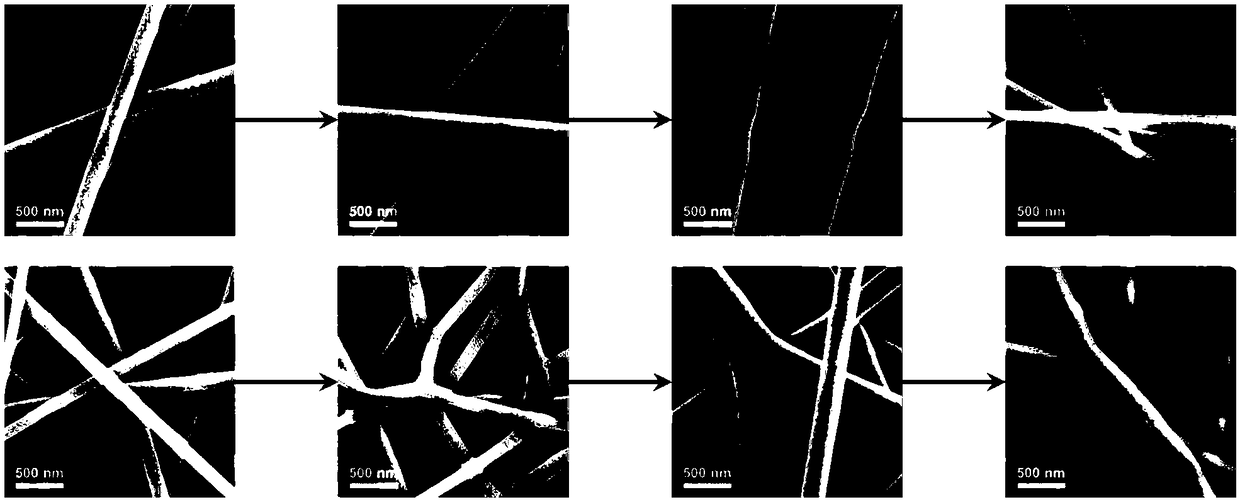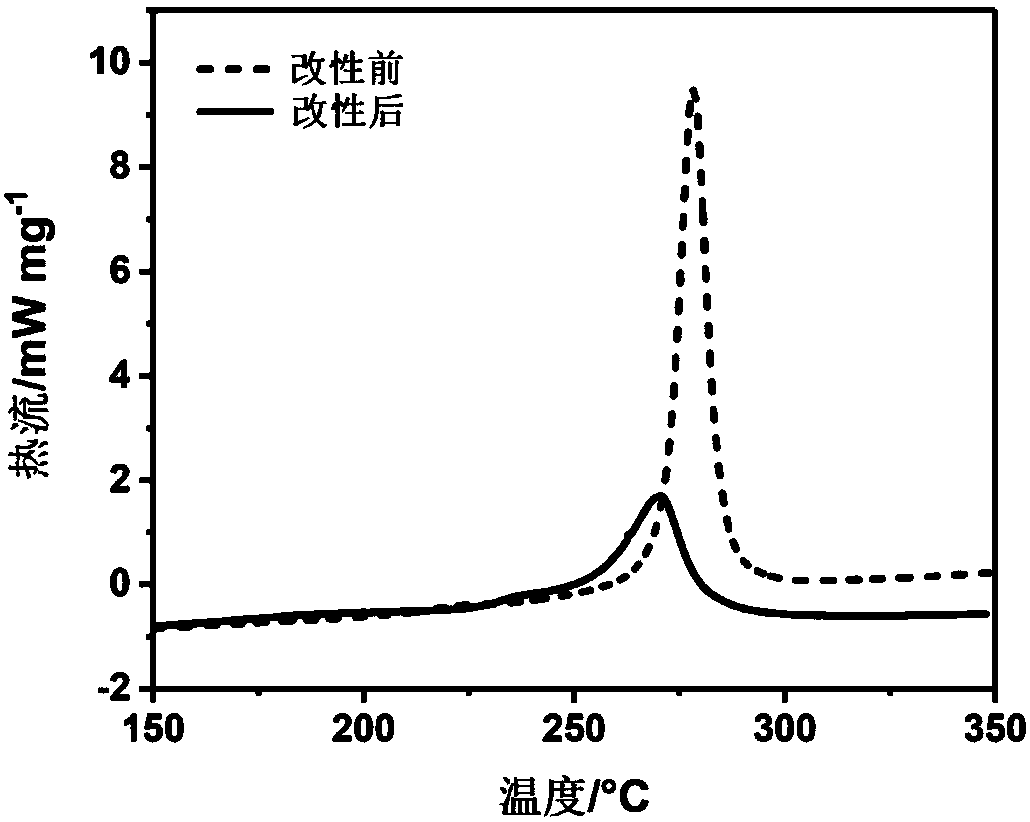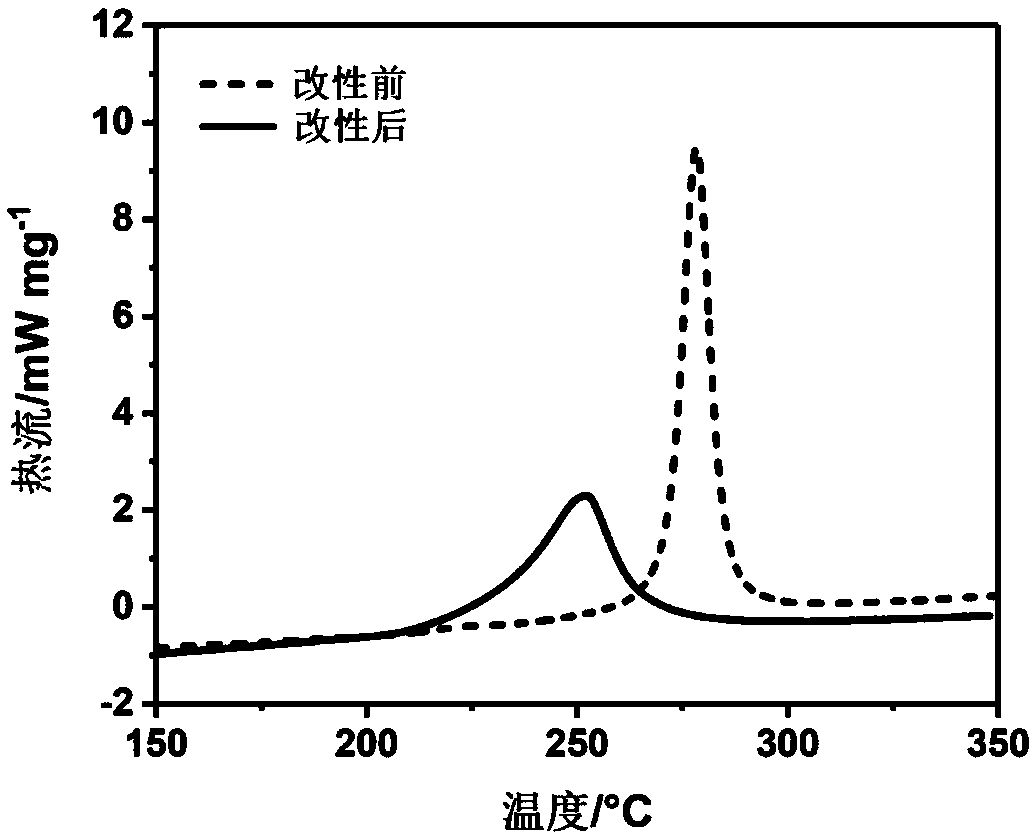Method for preparing carbon nanofibers from wearing acrylic fibers or waste wearing acrylic fibers
A technology of nano-carbon fiber and acrylic fiber, applied in the direction of fiber chemical characteristics, textiles and papermaking, etc., can solve the problems of enlargement, achieve the effect of rich sources, improved flexibility, and easy operation
- Summary
- Abstract
- Description
- Claims
- Application Information
AI Technical Summary
Problems solved by technology
Method used
Image
Examples
Embodiment 1
[0032] Adopt the method for preparing nano-carbon fiber by taking acrylic fiber, the specific process of this method is as follows:
[0033] (1) Wash the acrylic yarn twice with deionized water and acetone alternately, sieve to remove solid impurities, dry at 80°C for 24 hours, and set aside;
[0034] (2) Dissolving the acrylic yarn in step (1) in DMF, the mass ratio of acrylic yarn to DMF is 1:8, and after being completely dissolved, an unmodified spinning precursor is obtained for use;
[0035] (3) Add sodium acetate to the spinning precursor obtained in step (2). The amount of sodium acetate added is 5% of the mass of the acrylic yarn (calculated as 100% of the mass of the acrylic yarn), and modified at 100°C for 1h , to obtain a modified spinning precursor;
[0036] (4) The spinning precursors in steps (2) and (3) are prepared by electrospinning technology to prepare nano-acrylic fibers;
[0037] (5) The nano-acrylic fiber in step (4) is subjected to continuous pre-oxida...
Embodiment 2
[0041] Adopt the method for preparing nano-carbon fiber by taking acrylic fiber, the specific process of this method is as follows:
[0042] (1) Exactly the same as step (1) in Example 1, purifying acrylic fiber;
[0043] (2) Dissolving the acrylic yarn in step (1) in DMF, the mass ratio of acrylic yarn to DMF is 1:10, and after being completely dissolved, an unmodified spinning precursor is obtained for use;
[0044] (3) Add nickel acetate to the spinning precursor in step (2), the amount of nickel acetate added is 10% of the mass of acrylic fiber yarn (calculated as 100% of the mass of acrylic fiber yarn), and modified at 85°C for 10h, Obtain modified spinning precursor;
[0045] (4) Prepare nano-acrylic fibers from the spinning precursors in steps (2) and (3) by centrifugal spinning technology;
[0046] (5) Analyze the thermal properties of the unmodified and modified nano-acrylic fibers prepared in step (4) using a differential scanning calorimeter (DSC), as shown in f...
Embodiment 3
[0049] Adopt the method for preparing nano-carbon fiber by taking acrylic fiber, the specific process of this method is as follows:
[0050] (1) Exactly the same as step (1) in Example 1, purifying acrylic fiber;
[0051] (2) Dissolving the acrylic yarn in step (1) in DMF, the mass ratio of acrylic yarn to DMF is 1:6, and after being completely dissolved, an unmodified spinning precursor is obtained for use;
[0052] (3) Add zinc chloride and copper chloride to the spinning precursor of step (2), wherein the additions of zinc chloride and copper chloride are respectively 10% and 10% of the mass of acrylic yarn (acrylic yarn Yarn quality is 100%), modified at 50°C for 6h to obtain a modified spinning precursor;
[0053] (4) Using the spinning precursors in steps (2) and (3) to prepare nano-acrylic fibers by brush spinning;
[0054] (5) Analyze the thermal properties of the unmodified and modified nano-acrylic fibers prepared in step (4) using a differential scanning calorimet...
PUM
| Property | Measurement | Unit |
|---|---|---|
| size | aaaaa | aaaaa |
Abstract
Description
Claims
Application Information
 Login to View More
Login to View More - R&D
- Intellectual Property
- Life Sciences
- Materials
- Tech Scout
- Unparalleled Data Quality
- Higher Quality Content
- 60% Fewer Hallucinations
Browse by: Latest US Patents, China's latest patents, Technical Efficacy Thesaurus, Application Domain, Technology Topic, Popular Technical Reports.
© 2025 PatSnap. All rights reserved.Legal|Privacy policy|Modern Slavery Act Transparency Statement|Sitemap|About US| Contact US: help@patsnap.com



